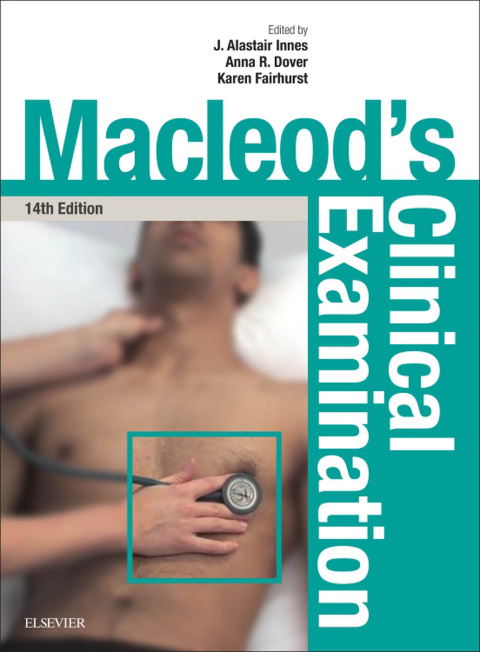Description
Efnisyfirlit
- Cover image
- Title Page
- Table of Contents
- John Macleod (1915–2006)
- Copyright
- Preface
- Acknowledgements
- How to make the most of this book
- Examination sequences
- Clinical skills videos
- Key points in examinations: photo galleries
- Video contents
- Video production team
- Contributors
- Section 1 Principles of Clinical History and Examination
- Introduction
- 1 Managing clinical encounters with patients
- The clinical encounter
- Alternatives to face-to-face encounters
- Professional responsibilities
- Personal responsibilities
- 2 General aspects of history taking
- The importance of a clear history
- Gathering information
- Difficult situations
- 3 General aspects of examination
- General principles of physical examination
- Preparing for physical examination
- Sequence for performing a physical examination
- Initial observations
- Hands
- Skin
- Tongue
- Odours
- Body habitus and nutrition
- Lumps and lymph nodes
- Spot diagnoses
- Section 2 System-Based Examination
- Introduction
- 4 The cardiovascular system
- Heart
- Peripheral arterial system
- Peripheral venous system
- 5 The respiratory system
- Anatomy and physiology
- The history
- The physical examination
- Interpretation of the findings
- Investigations
- 6 The gastrointestinal system
- Anatomy and physiology
- The history
- The physical examination
- Investigations
- 7 The nervous system
- Anatomy and physiology
- The history
- The physical examination
- Cranial nerves
- Motor system
- Sensory system
- Peripheral nerves
- Interpretation of the findings
- Investigations
- 8 The visual system
- Anatomy and physiology
- The history
- The physical examination
- Investigations
- 9 The ear, nose and throat
- Ear
- Nose and sinuses
- Mouth, throat and neck
- 10 The endocrine system
- The thyroid
- The parathyroids
- The pituitary
- The adrenals
- The gonads
- Diabetes
- 11 The reproductive system
- Breast
- Female reproductive system
- Obstetric history and examination: the booking visit
- Routine antenatal check in later pregnancy
- Male reproductive system
- 12 The renal system
- Anatomy and physiology
- The history
- The physical examination
- Interpretation of the findings
- Investigations
- 13 The musculoskeletal system
- The history
- The physical examination
- Detailed examination of the musculoskeletal system
- Fractures, dislocations and trauma
- Investigations
- 14 The skin, hair and nails
- Anatomy and physiology
- The history
- The physical examination
- Investigations
- Section 3 Applying History and Examination Skills in Specific Situations
- Introduction
- 15 Babies and children
- Babies
- Older children
- 16 The patient with mental disorder
- The history
- The mental state examination
- The physical examination
- Collateral history
- Psychiatric rating scales
- Putting it all together: clinical vignettes
- 17 The frail elderly patient
- Assessment of the frail elderly patient
- The history
- The physical examination
- Interpretation of the findings
- 18 The deteriorating patient
- Vital signs
- Early warning scores
- Initial assessment
- The ABCDE approach
- Sepsis
- Ongoing management
- 19 The dying patient
- Assessing the dying patient
- Confirming and certifying death
- Looking after yourself and others
- Section 4 Putting History and Examination Skills to Use
- Introduction
- 20 Preparing for assessment
- General principles
- Methods of assessment
- Marking structures
- Approach to preparation
- Approach to assessment
- Putting it all together
- 21 Preparing for practice
- Adapting history and examination skills appropriately
- Integrated examination
- Diagnostic strategies
- Approach to the patient with medically unexplained symptoms
- Assessment of a patient with minor injury or illness
- Assessment of a critically ill patient
- Documenting your findings
- Communicating with colleagues
- Index





